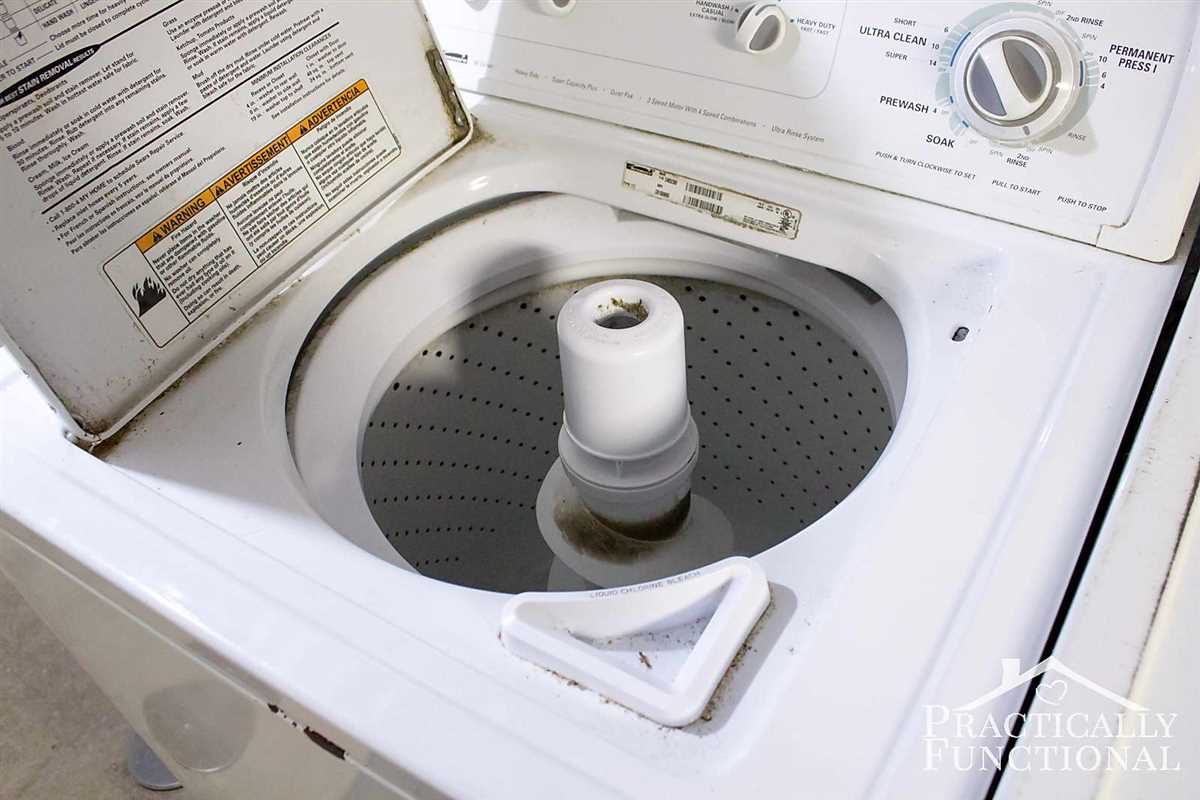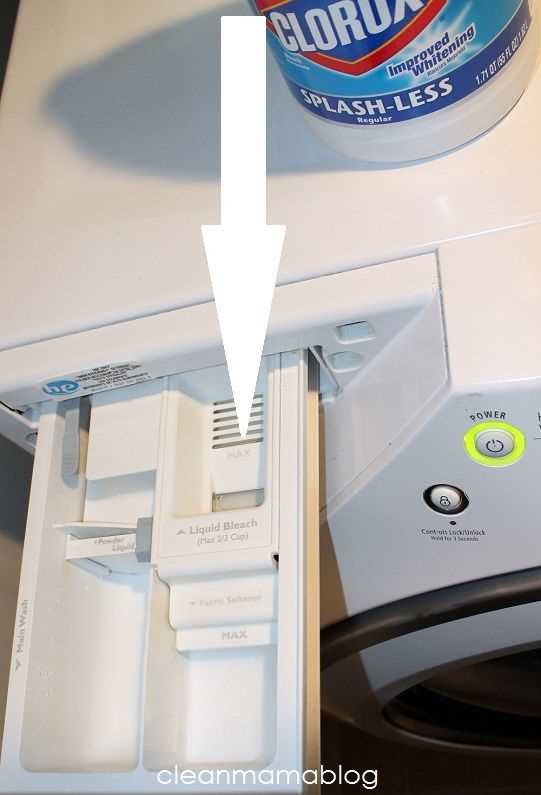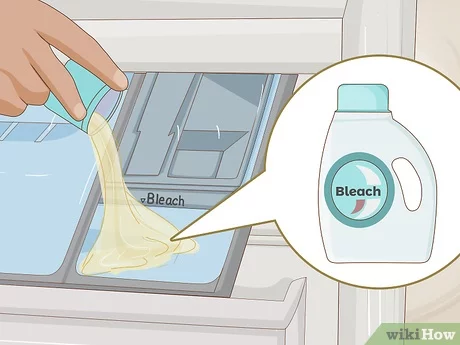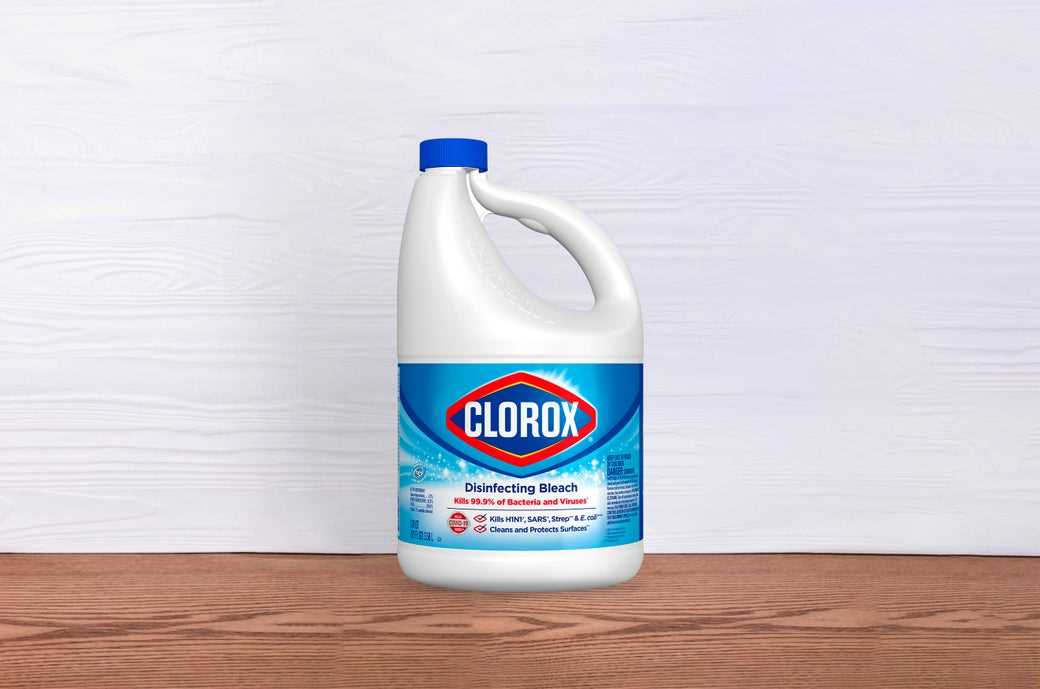




Using bleach in the washing machine is a great way to brighten and disinfect your laundry. While bleach can be a powerful tool, it’s important to use it correctly to avoid damaging your clothes or washing machine. In this ultimate guide, we’ll walk you through the dos and don’ts of using bleach in the washing machine, so you can achieve perfectly clean and fresh-smelling laundry every time.
First and foremost, it’s important to know which fabrics are safe to bleach. Bleach is suitable for use on most white or colorfast fabrics, but it can cause damage to delicate fabrics or colors. Always check the care label on your clothing before using bleach. If in doubt, perform a spot test on a hidden area of the fabric.
When using bleach, it’s crucial to follow the instructions on the product’s packaging. Different bleach products have varying concentration levels and usage instructions. Always measure the correct amount of bleach according to the instructions, as using too little may not give you the desired results, while using too much can damage your clothes.
Before adding bleach to your washing machine, it’s important to dilute it. Never pour bleach directly onto your clothes, as this can result in bleach spots or streaks. Dilute the bleach by adding it to a bucket of water first and then pour the mixture into the washing machine. This will help to evenly distribute the bleach and prevent any potential damage.
It’s also essential to time your bleach cycle correctly. Add the diluted bleach to your washing machine during the wash cycle, usually after the detergent has dissolved and the clothes have started agitating. Avoid adding bleach at the beginning of the wash cycle, as this can lead to insufficient dilution and uneven distribution.
Remember to always separate your laundry into different loads based on fabric color and type. Dark or brightly colored fabrics should be washed separately from whites or light-colored fabrics. Bleach is best used on white fabrics, as it can cause discoloration or stains on colored fabrics.
By following these tips and guidelines, you can safely and effectively use bleach in your washing machine to keep your laundry bright, fresh, and hygienically clean. Remember to read and follow the instructions on the packaging of your chosen bleach product, and always be cautious when using bleach on fabrics that may be delicate or prone to fading.
Understanding the Basics of Bleach
Before using bleach in your washing machine, it’s important to understand the basics of how it works and when it should be used. Bleach is a powerful cleaning agent that can help remove stains and brighten fabrics. However, it can also be damaging if used incorrectly, so it’s essential to use it sparingly and follow the instructions carefully.
Types of Bleach
- Chlorine bleach: This is the most common type of bleach and is often used for white or colorfast fabrics. It is effective at removing tough stains and disinfecting surfaces.
- Color-safe bleach: This bleach is designed to be safe for use on colored fabrics. It is gentler than chlorine bleach and can help to remove stains without causing color fading.
- Oxygen bleach: This bleach is non-chlorine based and is safe for use on most types of fabric. It is particularly effective at removing organic stains, such as those caused by food or grass.
Precautions and Safety Tips
When using bleach in your washing machine, it’s important to take the following precautions:
- Read the label: Always read and follow the instructions provided on the bleach bottle to ensure safe and effective use.
- Dilute properly: Most bleach products need to be diluted before use. Follow the instructions carefully to avoid damaging your clothes or the washing machine.
- Test on a small area: Before using bleach on a garment, test it on a small, inconspicuous area to ensure that it won’t cause color fading or damage.
- Use gloves and ventilate the area: Bleach can be harsh on the skin and respiratory system, so it’s important to wear gloves and use bleach in a well-ventilated area.
When to Use Bleach
Bleach can be used in the washing machine for several purposes:
- To remove tough stains:
- Apply a small amount of bleach directly to the stain before washing.
- Let it sit for a few minutes, then wash as usual.
- Check the garment before drying to ensure the stain has been removed.
- To whiten dull fabrics:
- Add a small amount of bleach to the washing machine along with your regular detergent.
- Wash as usual.
- Check the fabric after washing and repeat if necessary.
- To disinfect:
- Add bleach to a hot wash cycle to kill bacteria and sanitize your laundry.
- Follow the instructions on the bleach bottle for the proper amount to use.
Conclusion
Bleach can be a helpful tool in your laundry routine when used correctly. By understanding the different types of bleach, taking proper precautions, and knowing when to use it, you can keep your clothes clean, bright, and free from stains.
Learn about the Different Types of Bleach

1. Chlorine bleach

Chlorine bleach is the most commonly used type of bleach and is effective at removing tough stains and whitening fabrics. It contains sodium hypochlorite as its active ingredient and is known for its strong odor. Chlorine bleach should be used on white or colorfast items only, as it can cause color fading or damage to delicate fabrics.
2. Oxygen bleach
Oxygen bleach, also known as color-safe bleach or non-chlorine bleach, is a gentler alternative to chlorine bleach. It uses hydrogen peroxide as its active ingredient and is safe to use on colored fabrics. Oxygen bleach is effective at removing stains and brightening colors without causing fading or damage. It is also safe for use on delicate fabrics.
3. All-fabric bleach

All-fabric bleach is a bleach alternative that is safe to use on all types of fabrics. It is formulated to be gentler than chlorine bleach and oxygen bleach, making it suitable for use on delicate or non-colorfast items. All-fabric bleach is effective at removing stains and maintaining the brightness of colors.
4. Color-safe bleach
Color-safe bleach, also known as color bleach or color-safe fabric whitener, is specifically designed for use on colored fabrics. It is typically chlorine-free and uses oxygen bleach or a similar active ingredient. Color-safe bleach is effective at removing stains and brightening colors without causing color fading or damage.
5. Bleach alternatives
There are also various bleach alternatives available on the market, which provide stain removal and whitening properties without the use of bleach. These alternatives may use enzymes, peroxides, or other ingredients to break down stains and brighten fabrics. They are often safe for use on all types of fabrics, including delicate or non-colorfast items.
6. Pre-wash stain removers
Pre-wash stain removers are products that are applied directly to stains before laundering. While they are not technically bleach, they can be effective at removing tough stains. These stain removers often contain enzymes or other stain-fighting ingredients to break down and lift stains from the fabric fibers.
| Bleach Type | Main Active Ingredient | Safe for Colored Fabrics | Effectiveness | Safe for Delicate Fabrics |
|---|---|---|---|---|
| Chlorine bleach | Sodium hypochlorite | No | High | No |
| Oxygen bleach | Hydrogen peroxide | Yes | High | Yes |
| All-fabric bleach | Various | Yes | Moderate | Yes |
| Color-safe bleach | Various | Yes | Moderate | Yes |
| Bleach alternatives | Various | Yes | Variable | Yes |
| Pre-wash stain removers | Various | Yes | Variable | Yes |
Safe Handling and Storage of Bleach
Bleach is a powerful cleaning agent that can be used effectively in the washing machine. However, it is important to handle and store bleach properly to ensure safety. Here are some tips to safely handle and store bleach:
- Read the label: Always read the label on the bleach bottle before use. It contains important information about handling and safety precautions.
- Protect yourself: When handling bleach, always wear protective gloves and eye goggles to avoid contact with your skin and eyes.
- Work in a well-ventilated area: Use bleach in a well-ventilated area to prevent inhalation of fumes. Open windows or turn on the exhaust fan to improve ventilation.
- Do not mix bleach with other products: Never mix bleach with other household cleaners or chemicals, as it can cause dangerous reactions and release toxic fumes.
- Keep away from children and pets: Store bleach in a high, locked cabinet or cupboard to keep it out of the reach of children and pets. Never leave bleach unattended.
- Store in a cool, dry place: Keep bleach in its original container and store it in a cool, dry place away from direct sunlight. Exposure to heat and sunlight can degrade its effectiveness.
- Dispose of properly: When disposing of bleach, do not pour it down the drain or toilet. Instead, follow your local regulations for hazardous waste disposal or look for community recycling programs.
By following these guidelines, you can safely handle and store bleach, ensuring its effectiveness as a cleaning agent in your washing machine while minimizing potential risks to yourself, your family, and the environment.
Preparation for Using Bleach in the Washing Machine
Bleach can be a useful tool for keeping your clothes bright and clean. Before using bleach in your washing machine, it’s important to properly prepare to ensure the best results. Here are some steps to follow:
1. Read the garment labels
Before using bleach on any garment, it’s important to read the care label. Some fabrics may be damaged or discolored by bleach, so it’s essential to check if the garment is bleach-safe.
2. Check for colorfastness
Before using bleach, it’s important to check if the garment is colorfast. Colorfastness refers to the ability of a fabric to retain its color when exposed to water, detergent, or bleach. To check for colorfastness, dampen a small, inconspicuous area of the fabric and apply a small amount of bleach. Wait for a few minutes and then rinse the area thoroughly. If the color remains unchanged, the fabric is colorfast and safe to use bleach on.
3. Sort your laundry
Prior to using bleach, sort your laundry into separate piles according to color and fabric type. Washing clothes of similar colors and fabric types together helps prevent any unwanted color transfer or damage. It’s recommended to wash whites separately from colored clothes.
4. Measure the bleach
It’s crucial to measure the bleach properly to avoid using too much or too little. Check the bleach bottle for specific instructions on how much bleach to use based on the size of your load. Overusing bleach can damage fabrics and cause yellowing, while underusing may not provide the desired cleaning effect.
5. Use the appropriate bleach
There are different types of bleach available, including chlorine bleach and oxygen bleach. Each type has its own usage instructions and purposes. Make sure to use the appropriate bleach for the fabric and stains you are treating.
6. Protect your hands and clothes
Since bleach can be harsh on the skin and cause clothing stains, it’s important to protect yourself and your clothes. Wear rubber gloves when handling bleach and avoid splashing it on your clothes or skin.
7. Add the bleach to the washing machine
Once your washing machine is loaded with clothes and water, add the measured amount of bleach to the bleach dispenser or directly into the machine’s drum. Avoid pouring bleach directly onto the clothes, as this can cause uneven bleaching.
8. Follow the machine’s instructions

It’s important to follow the instructions provided by your washing machine manufacturer regarding the proper use of bleach. This may include setting specific temperature and cycle options or adding bleach at a particular stage of the washing process.
By following these preparation steps, you can safely and effectively use bleach in your washing machine to keep your clothes looking fresh and clean.
Sorting Laundry and Checking Labels
When preparing to use bleach in your washing machine, it’s important to sort your laundry and check the garment labels. This will help you determine which items can be safely bleached and which items should be avoided.
Sort your laundry

Before starting the washing process, separate your laundry into different categories based on color and fabric type. This will help prevent color bleeding and damage to delicate fabrics.
- Whites: Separate white clothing, towels, and linens from colored items.
- Colors: Sort colored garments into light and dark categories.
- Delicates: Set aside delicate items such as lingerie, silk, or wool for a gentler wash cycle.
Check garment labels
Before using bleach, carefully read the labels on your garments to determine if they can withstand the bleaching process.
- Look for the “Bleach Safe” or “Chlorine Bleach” label to indicate the item can be bleached.
- If the label specifies “Non-Chlorine Bleach,” use a color-safe bleach alternative instead.
- Garments labeled “Do Not Bleach” should not be treated with bleach.
It’s important to follow these guidelines to ensure the longevity and quality of your clothing. Bleaching unsuitable items can cause discoloration, weaken fabrics, or damage trims and embellishments.
Measuring and Diluting Bleach Properly
Using bleach in your washing machine can be an effective way to remove stains and disinfect your clothes. However, it is important to measure and dilute the bleach properly to ensure the best results and avoid damaging your clothes or the washing machine.
Measuring Bleach
When using bleach in the washing machine, it is crucial to measure the appropriate amount. This will depend on the size of your load and the concentration of the bleach. Most bleach bottles will have specific instructions for measuring, so it is important to follow them closely.
A general guideline for measuring bleach is to use 3/4 cup of bleach for a standard-sized load (10-12 pounds) of laundry. However, it is best to check the bleach bottle for specific instructions or consult the manufacturer’s website for accurate measurements.
Diluting Bleach
To avoid damaging your clothes or the washing machine, it is important to dilute the bleach properly before adding it to the washing machine.
- Fill a bucket or sink with cold water.
- Add the appropriate amount of bleach to the water.
- Stir the mixture well to ensure the bleach is evenly distributed.
Once the bleach is properly diluted, it is safe to add it to the washing machine. Be sure to pour the diluted bleach directly into the machine’s bleach dispenser, if available. If your washing machine does not have a bleach dispenser, you can add it to the wash water before adding the clothes.
Precautions
When working with bleach, it is important to take proper precautions to protect yourself and your clothing.
- Wear protective gloves to avoid direct contact with bleach.
- Work in a well-ventilated area to avoid inhaling bleach fumes.
- Avoid mixing bleach with other cleaning products, as this can produce dangerous chemical reactions.
By measuring and diluting bleach properly, you can safely and effectively use it in your washing machine to remove stains and disinfect your clothes. Remember to always follow the manufacturer’s instructions and take appropriate safety precautions.
Using Bleach in the Washing Machine
When it comes to brightening and whitening your clothes, bleach can be a powerful tool. However, it’s important to use bleach correctly in the washing machine to avoid damaging your garments or causing any unwanted discoloration. Here are some guidelines to follow:
1. Read the Label

Before using bleach, always check the care label on your clothes. Some fabrics, such as silk or wool, are not bleach-safe, and using bleach on them can lead to irreversible damage. Make sure to follow the manufacturer’s instructions for each item of clothing.
2. Sort Your Laundry
Separate your laundry by color and fabric type. Keep whites separate from colors and wash them separately. Bleach is best used on white or light-colored items, as it can cause color fading or bleaching on darker fabrics. Additionally, avoid using bleach on delicate fabrics or items with embellishments, as they may be sensitive to bleach.
3. Choose the Right Bleach
There are different types of bleach available, including chlorine bleach and oxygen bleach. Chlorine bleach is best for white fabrics, while oxygen bleach is safer for colored items. Always use the recommended amount specified on the bleach bottle to avoid any damage or discoloration.
4. Use the Correct Amount
Using too much bleach can damage your clothes, while using too little may not achieve the desired results. Follow the instructions on the bleach packaging for the correct amount to use based on the size of your load. If you have a top-loading machine, add the bleach directly to the water before adding the clothes. For front-loading machines, use the bleach dispenser if available.
5. Pre-Treat Stains
If you have stubborn stains on your clothes, it’s recommended to pre-treat them before adding bleach to the wash. Apply a small amount of bleach directly to the stain and rub gently before washing the item as usual.
6. Don’t Mix with Other Products
Never mix bleach with other cleaning products, such as ammonia or vinegar. This can create toxic fumes and be harmful to your health. Always use bleach on its own and follow the manufacturer’s instructions.
7. Run an Extra Rinse Cycle
After using bleach, it’s essential to run an extra rinse cycle to ensure all traces of bleach are removed from your clothes. This will help prevent any skin irritation or reactions when wearing the garment.
Following these guidelines will help you use bleach safely and effectively in your washing machine, resulting in brighter and whiter clothes. Remember, always read the instructions and labels of your clothing and bleach products to ensure the best results.
FAQ
What is the purpose of using bleach in the washing machine?
The purpose of using bleach in the washing machine is to remove tough stains and brighten white fabrics.
Can I use bleach on colored fabrics?
No, bleach should not be used on colored fabrics as it can cause the colors to fade or change.
How much bleach should I use in the washing machine?
The amount of bleach to use in the washing machine depends on the size of the load and the concentration of bleach. It is usually recommended to use about 1/2 cup of bleach for a standard-sized load.
Is it safe to mix bleach with other laundry detergents?
No, it is not safe to mix bleach with other laundry detergents as it can create harmful chemical reactions. Bleach should only be used on its own and should not be mixed with any other cleaning products.
Are there any alternatives to bleach for whitening clothes?
Yes, there are alternative methods for whitening clothes without the use of bleach. Some common alternatives include using hydrogen peroxide, lemon juice, or baking soda. These natural alternatives can help to whiten clothes without the harsh chemicals of bleach.
Is it safe to use bleach in the washing machine?
Yes, it is safe to use bleach in the washing machine, but it is important to follow the instructions on the bleach bottle and the clothing label. Bleach can be a powerful cleaning agent, but it should be used with caution to avoid damaging your clothes or the washing machine.
How much bleach should I use in the washing machine?
The amount of bleach you should use in the washing machine depends on the size of the load and the concentration of the bleach. As a general rule, you can add 1/2 cup of bleach for a standard-sized load. However, it is always best to check the instructions on the bleach bottle for specific guidelines.














